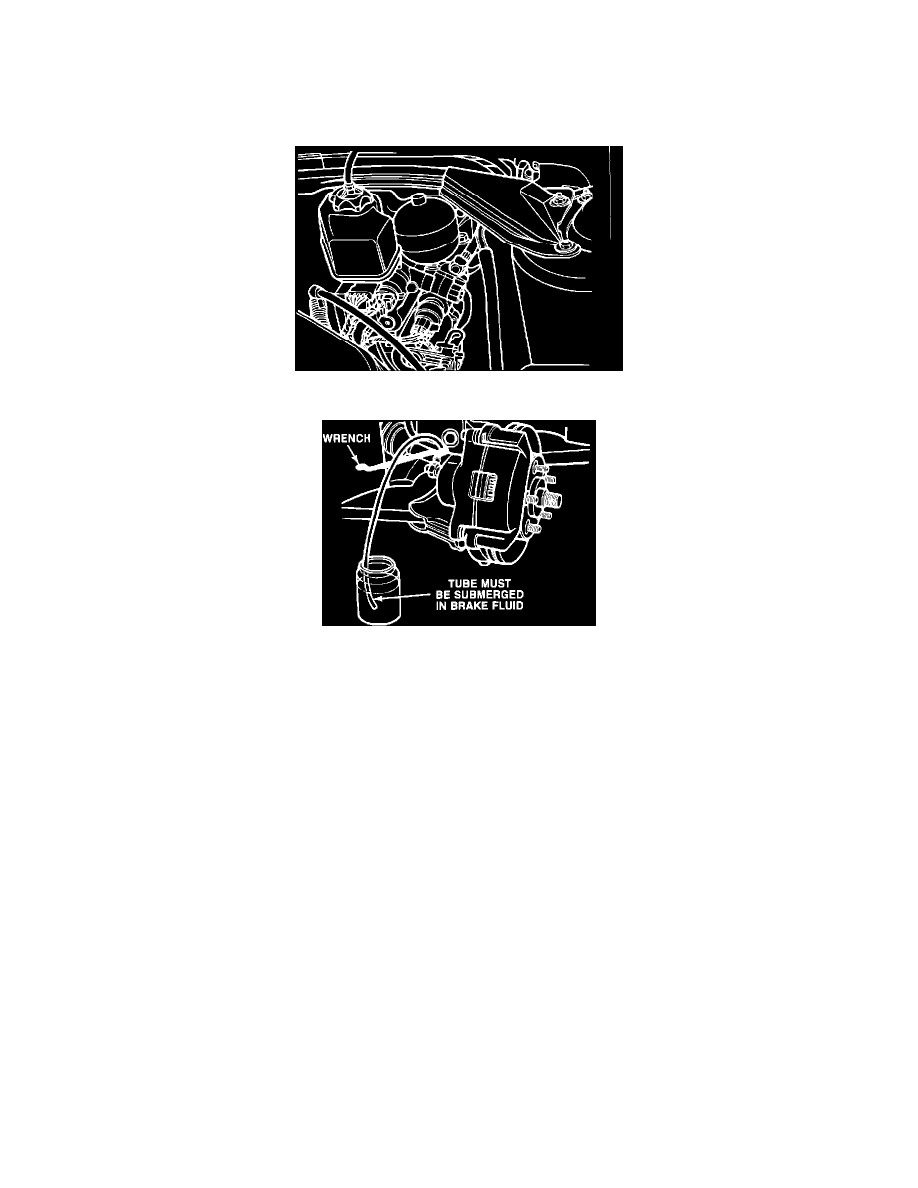Bonneville V6-231 3.8L VIN 3 SFI (1988)

Brake Bleeding: Service and Repair
Hydraulic System Bleeding
With ABS System
Fig. 1 Bleeder Adapter Installation
Fig. 1 Wheel Cylinder Bleeding
SPECIAL TOOL REQUIRED (Or Equivalent)
^
J-35798, Bleeder adaptor.
PRESSURE BLEEDING
Only the rear brakes must be pressure bled. Front hydraulic circuits may be bled manually. To prevent air, moisture and other contaminants from
entering system, only diaphragm type pressure bleeding equipment should be used.
FRONT CIRCUIT
1. Ignition must be turned "OFF" and remain "OFF" throughout this procedure..
2. Depressurize hydraulic accumulator by pumping the brake pedal a minimum of 25 times using a pedal force of approximately 220 N (50 lbs). A
noticeable change in pedal feel will occur when the accumulator is depressurized.
3. Remove reservoir cap and install J-35798.
4. Attach diaphragm type bleeding equipment to bleeder adapter and charge pressure bleeder to 138 kPa (20 psi).
5. Raise and support vehicle. Attach a clear bleeder hose to a front bleeder valve, then submerse the other end in a clear container partially filled with
DOT 3 brake fluid.
6. Open bleeder valve and allow fluid to flow from bleeder until fluid is clear with no air bubbles.
7. Close bleeder valve, ensuring bleeder seats in the closed position.
8. Repeat steps 5 through 7 on remaining front bleeder valve.
9. Check fluid level and fill as required.
WARNING: Using brake Fluid which is contaminated with water, petroleum based fluids or any other foreign material may result in
impaired system operation, property damage or personal injury.
10. Check pedal for sponginess. Repeat procedure until desired pedal is achieved.
11. Remove bleeding equipment and install reservoir cap.
12. Turn ignition "ON" and allow pump to charge the accumulator.
REAR CIRCUIT
